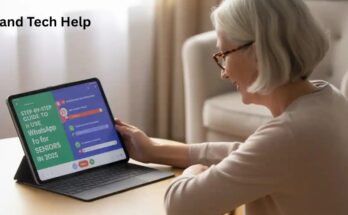Wearable technology for healthy aging is becoming more and more popular as the world’s population ages. Predictive wearables that can track crucial health indicators like blood pressure and heart rate are made possible by these advancements. These gadgets have the ability to manage geriatric illnesses and lower health risks while assisting seniors in preserving their freedom. However, despite their potential, wearables adoption among seniors is beset by a number of obstacles, such as ethical issues around health data and impediments to technological adoption. The possibilities, difficulties, and moral implications of wearable technology for healthy aging will be discussed in this article, particularly in light of the population’s aging.
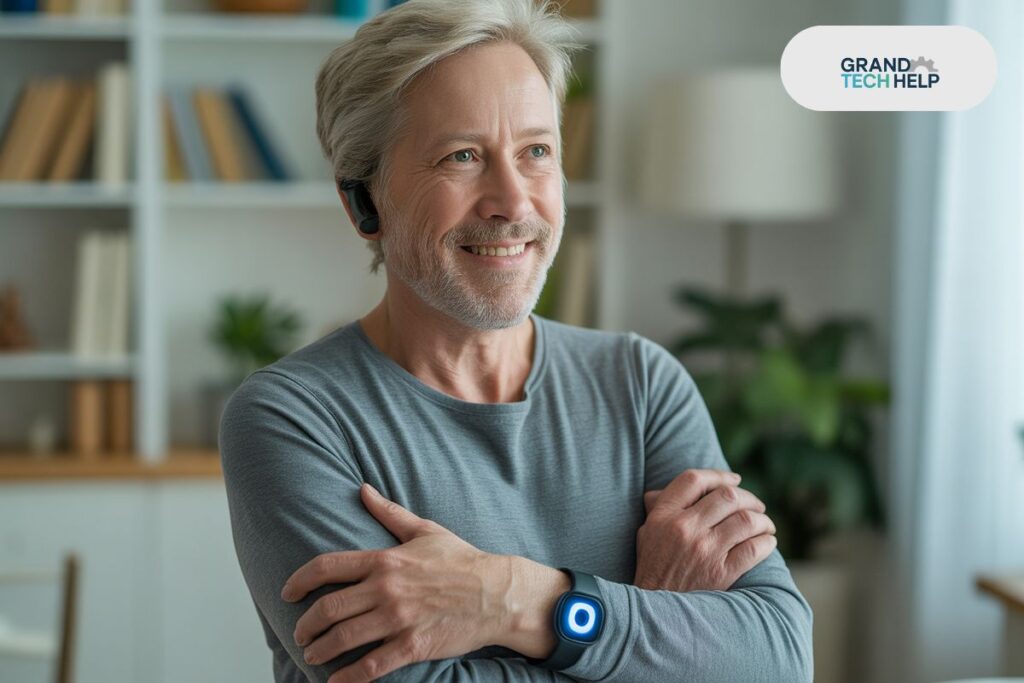
Wearable Technology’s Contribution to Healthy Aging
An important part of older persons’ health monitoring technology is wearable technology. They offer constant monitoring of vital indicators, including blood pressure, oxygen saturation, and heart rate, all of which are critical for treating cardiac conditions and cardiovascular disease. These gadgets allow seniors to regularly monitor their health and identify early indicators of issues, such atrial fibrillation or other cardiac abnormalities, by collecting data in real-time. For prompt interventions, fewer hospital stays, and the avoidance of major consequences, early detection is essential. For those with long-term illnesses like diabetes, heart disease, or arthritis, this kind of predictive health monitoring is essential.
Smartwatches, for instance, may now track heart rhythms and notify users of any abnormalities that might indicate the beginning of dangerous illnesses like atrial fibrillation. In addition to helping seniors monitor their health, these gadgets enable remote healthcare provider monitoring. Doctors can evaluate wearable data and modify treatment regimens by using telemedicine consultations. This can improve overall healthcare technology improvements for seniors by increasing access to preventive healthcare options.
Wearable Technologies for Healthy Ageing
The potential of wearable health monitors to facilitate preventive care is among their most important advantages. Wearables can notify users of possible health hazards by continuously gathering health data, enabling them to take action before a problem develops. Certain wearables, for instance, employ machine learning algorithms to identify trends in a user’s lifestyle and forecast potential health problems in the future, such the beginning of geriatric diseases or falls.
By giving users and healthcare professionals real-time input, these wearables can also enhance patient monitoring. By providing physicians with important information about a patient’s status before a crisis arises, this can drastically lower emergency hospital admissions. Technology like this gives older persons who have long-term health issues or are at high risk of developing diseases like cardiovascular disease the chance to take charge of their health and improve their quality of life.
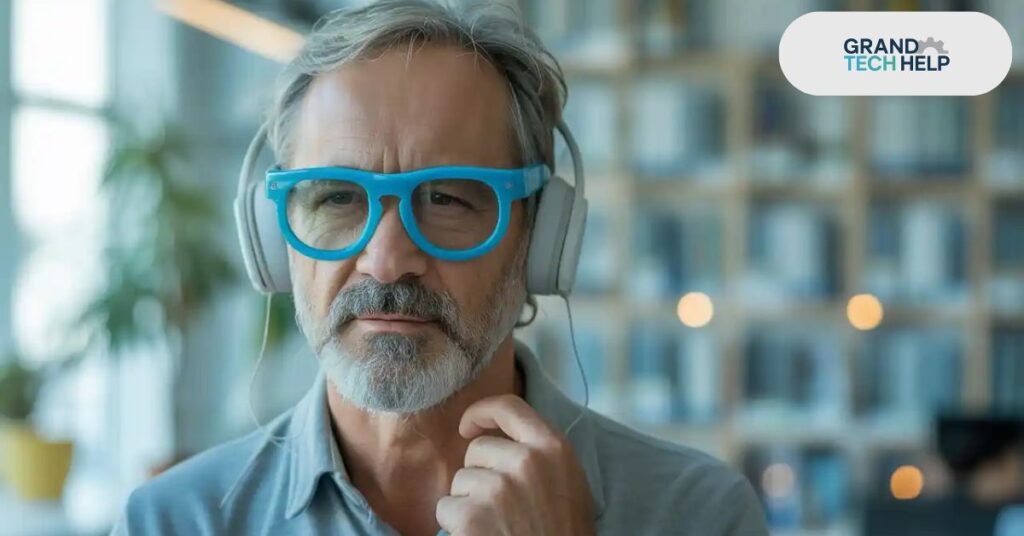
Obstacles to Older Adults’ Adoption of Wearable Technology
Although there is no denying the advantages of wearable technology for seniors, a number of obstacles to mass acceptance prevent older persons from using it. The accuracy of these devices’ health data is one of the main issues. Many elderly people could have trouble believing that the technology can accurately measure their vital signs or decipher health alarms. Additionally, certain wearable technology might be complicated, which makes it harder for seniors to adopt wearables. The gadget could not be pleasant to wear for long periods of time, or the interface might be challenging to use.
The price of these technologies is another problem. Many older folks, particularly those with restricted incomes, cannot afford the high cost of advanced wearable health monitors and smartwatches. Additionally, some seniors may be discouraged from utilizing these technologies due to privacy concerns around the gathering and storing of sensitive health data. The wider usage of wearables for seniors depends on making sure these gadgets are reasonably priced, easy to use, and provide a high degree of data security.
Wearable Technology for Elderly People: Ethical Issues
The use of wearable technology by seniors presents significant ethical issues, as is the case with any new technology. The privacy of data is among the most important issues. Large volumes of personal health data are collected via wearables, and if improperly protected, this data may be misused. Ensuring that only authorized parties, such emergency services or healthcare providers, have access to this data is crucial. There is also the matter of health data ownership. Who is the owner of the data that wearables produce? Who is at fault—the patient, the medical professional, or the maker of the device?
Furthermore, the adoption of predictive wearables that continuously track health could result in older persons being surveilled, which would raise concerns around permission and autonomy. Seniors should be thoroughly educated about the consequences of using such devices and given the freedom to choose how much of their health information is shared. The moral conundrum of independence vs surveillance must be carefully balanced to protect health and safety without violating individual liberties.
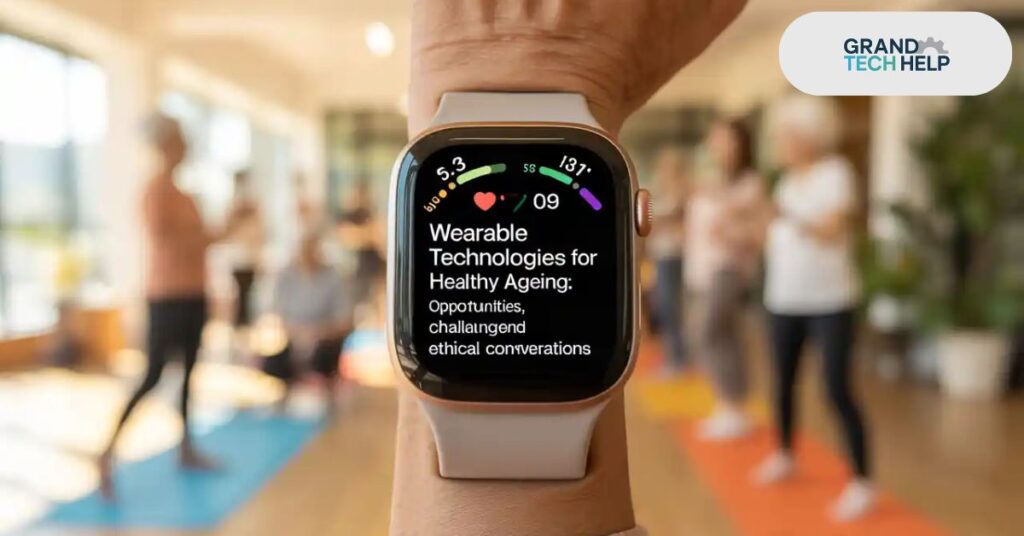
Benefits Based on Evidence: Research Findings and Case Studies
The usefulness of wearable health monitors in promoting healthy aging has been shown in numerous research. According to a UK study, seniors who used wearable technology that monitored their vital signs were able to better manage their diseases at home, which resulted in a significant decrease in hospital readmissions. Additionally, the study found that wearable technology increased seniors’ physical activity levels, lowering their risk of cardiovascular disease and enhancing their general health.
The use of wearable technology to track and treat cardiac conditions like atrial fibrillation was examined in another case study. Healthcare professionals were able to identify issues earlier, resulting in more effective treatments and fewer emergency interventions, and patients who used wearables to check their heart rate reported feeling more in control of their health. These results highlight how wearable technology has advanced in healthcare, making it a useful tool for addressing elderly healthcare diagnoses.
Technological Developments in Health Monitoring Wearable Technology
Wearable technology is getting smarter and more effective as it develops further. One field that has grown significantly is machine learning in healthcare, which enables wearable prediction algorithms to identify health hazards based on trends in users’ medical histories and lifestyles. This reduces the possibility of serious consequences and allows for earlier interventions by predicting prospective health issues before they arise.
In order to facilitate smooth communication between the devices and healthcare providers, wearables are also increasingly being connected with healthcare data systems. Doctors can now get real-time information about their patients’ illnesses thanks to this integration of healthcare data, which makes it simpler to modify treatment plans or step in during emergencies. These health monitoring technologies are always changing, opening up new possibilities for more precise health monitoring and improved patient care.
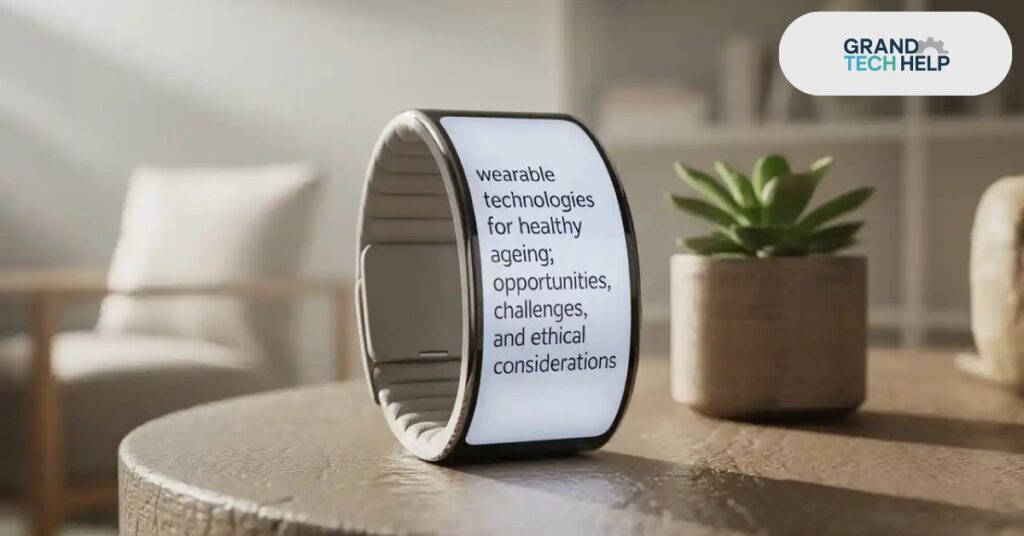
Smart Home Wearable Health Monitoring Systems: An Emerging Trend
A new era in elder care is being ushered in by the combination of smart home technologies and wearable health monitoring devices. Senior wearables can be connected to other gadgets in smart homes, including emergency warning systems, smart lights, and fall detectors. With wearables delivering continuous health data and smart home systems handling health risk alarms and triggering emergency responses as needed, this connection enables more thorough health monitoring.
For instance, a wearable gadget can immediately notify family members or emergency personnel if it detects a fall. In a similar vein, senior wearable technology can track daily activity levels and notify users if they are not moving for an extended period of time, indicating that they might require help. An atmosphere that is safer and more encouraging for senior citizens may result from the smooth integration of wearables and smart home technology.
Wearable Technology’s Potential for Promoting Health in the Future
Wearable technology appears to have a bright future in promoting older folks‘ health. More individualized healthcare will probably be possible because to advancements in machine learning and prediction algorithms, which will allow for the customization of therapies based on each patient’s particular health information. More sophisticated wearable technology that tracks a greater variety of vital signs might also be developed, which would enhance the capacity to identify early indicators of geriatric illnesses and other medical disorders.
Furthermore, it is impossible to ignore wearable technology’s potential to play a significant role in preventative healthcare solutions. Wearable technology may be crucial in lowering healthcare expenses and enhancing the health of senior citizens by providing real-time health tracking and facilitating telehealth consultations. More wearable technology will likely be incorporated into standard medical procedures as technology advances, giving senior citizens unprecedented control over their health.
In conclusion, older adults are moving toward a healthier future
To sum up, wearable technology for healthy aging is opening the door to a period when senior citizens can live freely, take care of their chronic illnesses, and get timely care. Although cost, accessibility, and privacy issues are some of the barriers to seniors’ wearable adoption, the potential advantages greatly exceed these drawbacks. Wearable technology will play a bigger role in encouraging preventative treatment and enhancing general health outcomes as health monitoring technology advances. We can guarantee that these technologies have a significant, beneficial influence on the lives of senior citizens by tackling the difficulties and moral dilemmas they raise.
FAQs
Q1: What are the top wearable technologies for healthy ageing in 2025?
A: The top wearables in 2025 include smartwatches for heart monitoring, fitness trackers, sleep trackers, fall-detection devices, and smart medical alert systems.
Q2: How do wearable technologies help with healthy ageing?
A: Wearables track vital signs, encourage physical activity, improve sleep, detect falls, and remind seniors to take medications—promoting overall well-being.
Q3: Which wearable is best for seniors in 2025?
A: Popular choices include advanced smartwatches with ECG, blood oxygen monitoring, GPS tracking, and senior-friendly fitness trackers with easy interfaces.
Q4: Are wearable devices easy for older adults to use?
A: Yes, many 2025 wearables feature large displays, simple navigation, voice commands, and automatic health alerts designed for senior comfort.
Q5: Can wearables actually improve longevity and quality of life?
A: Absolutely—by monitoring health, preventing emergencies, and encouraging healthy habits, wearables play a key role in supporting longer, healthier ageing.
